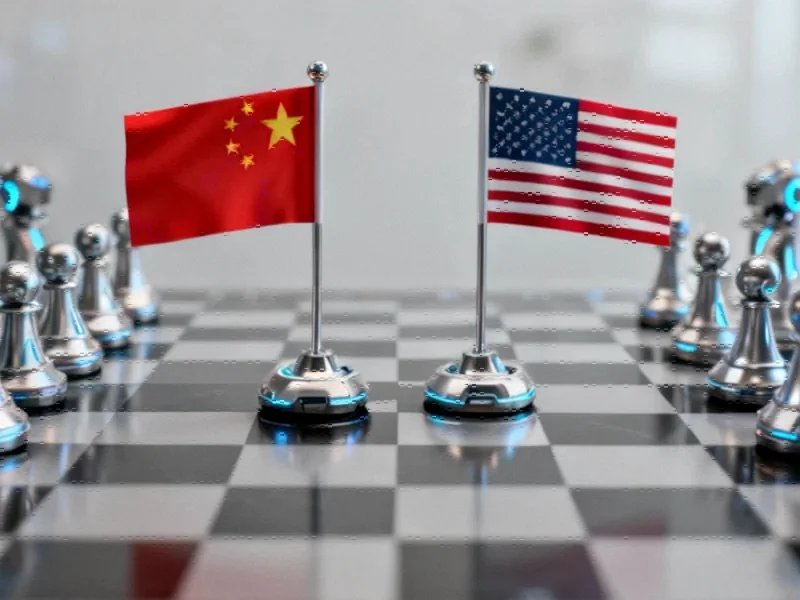Navigating the New Tech Investment Frontier
As geopolitical tensions between Washington and Beijing continue to evolve, investment strategists are observing a fundamental shift in China’s technological focus that’s creating new opportunities for long-term investors. While U.S.-China relations remain complex, China’s deliberate pivot toward industrial technology applications rather than consumer-focused innovations is reshaping the investment calculus for global markets.
“The tech that the Chinese government is supporting is much more on industrial tech,” noted Liqian Ren, leader of quantitative investment at WisdomTree, describing this transition as a “fundamental shift” in China’s development strategy. This strategic redirection comes as China implements its strategic tech focus that prioritizes sectors with long-term industrial applications.
AI Strategy: From Consumer to Industrial Applications
China’s recently detailed “AI+” strategy underscores Beijing’s intention to support artificial intelligence primarily for industrial rather than consumer applications. This approach represents a significant departure from previous tech development models and aligns with broader industry developments in automation and industrial computing.
The shift gained momentum earlier this year when DeepSeek’s AI breakthrough demonstrated China’s ability to compete with OpenAI despite U.S. restrictions on advanced chip access. This achievement surprised global investors and signaled that China’s tech ambitions remain robust despite external pressures.
Market Performance Divergence Creates Selective Opportunities
Recent market volatility has highlighted growing divergence between different Chinese equity classes. Following U.S. stock declines driven by regional bank concerns, Chinese markets experienced significant pressure, with the Shanghai Composite falling nearly 2% and Hong Kong’s Hang Seng Index dropping almost 2.5% in a single session.
This volatility has reinforced an emerging investment thesis favoring mainland China stocks (A-Shares) over Hong Kong listings. Morgan Stanley’s Chief China Equity Strategist Laura Wang advised clients to “stick to quality names with high earnings visibility and dividend plays for now,” while maintaining a tactical overweight position in A-Shares relative to Hong Kong stocks.
Technical Infrastructure Supporting China’s Ambitions
Behind China’s tech push lies significant infrastructure development, including advances in compiler technology that supports the complex computing requirements of modern industrial applications. These foundational improvements enable more sophisticated manufacturing and automation systems that form the backbone of China’s industrial technology strategy.
Concurrent with these technical advances, regulatory frameworks are evolving to support innovation. Recent regulatory changes in energy and infrastructure sectors demonstrate how policy adjustments can create more favorable environments for technological adoption and industrial modernization.
Sector-Specific Opportunities Emerging
Investment returns tell a compelling story about where value is accumulating in Chinese markets. According to UBS Chief GEM Equity Strategist Sunil Tirumalai, the return on invested capital for non-tech components of the MSCI China index has been improving while comparable Indian investments have largely stagnated.
When adding China internet stocks—typically including giants like Alibaba—Chinese equity returns significantly outperform Indian markets. This performance differential is attracting renewed international investor interest despite ongoing geopolitical concerns.
Computing Infrastructure as Strategic Enabler
The success of China’s industrial technology push depends heavily on robust computing infrastructure. Developments in operating system technology and industrial computing platforms provide the necessary foundation for advanced manufacturing, automation, and AI applications that drive China’s strategic sectors.
These technological building blocks enable everything from semiconductor manufacturing to factory automation systems, creating a virtuous cycle where infrastructure improvements support application development, which in turn drives demand for more advanced infrastructure.
Policy Support and Five-Year Plan Expectations
As Chinese leaders gather to discuss national goals for the next five years, expectations are building around further details on tech policy support. HSBC’s Chief Economist for Greater China Jing Liu anticipates that “focus areas are likely to be in frontier fields like AI, semiconductor development, robotics and biotech.”
This policy direction aligns with China’s broader strategy of achieving technological self-sufficiency while competing globally in high-value industrial sectors. The approach represents a long-term vision that extends beyond current market cycles or political tensions.
Investment Implications and Strategic Positioning
For investors with extended time horizons, current market conditions may present attractive entry points. “If people’s investment horizon is long I think it’s still a good time to position,” Ren advised, noting that determining which country will “win” the technology competition remains premature given the long-term nature of the contest.
Specific companies identified as potential outperformers include semiconductor manufacturer Gigadevice, enterprise software provider Yonyou, and factory automation specialist Inovance—all representing sectors aligned with China’s industrial technology priorities.
As China continues to execute its long-term technology strategy amid evolving U.S. relations, investors face both challenges and opportunities. The country’s deliberate pivot toward industrial applications, combined with selective market opportunities and ongoing policy support, creates a complex but potentially rewarding landscape for those able to navigate the crosscurrents of geopolitics and technological transformation.
This article aggregates information from publicly available sources. All trademarks and copyrights belong to their respective owners.
Note: Featured image is for illustrative purposes only and does not represent any specific product, service, or entity mentioned in this article.



